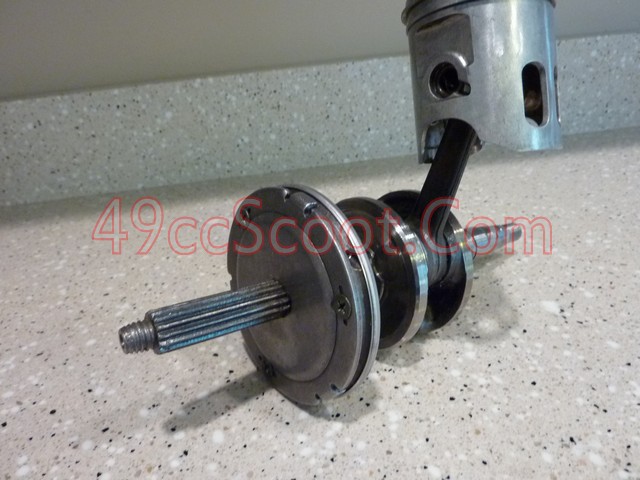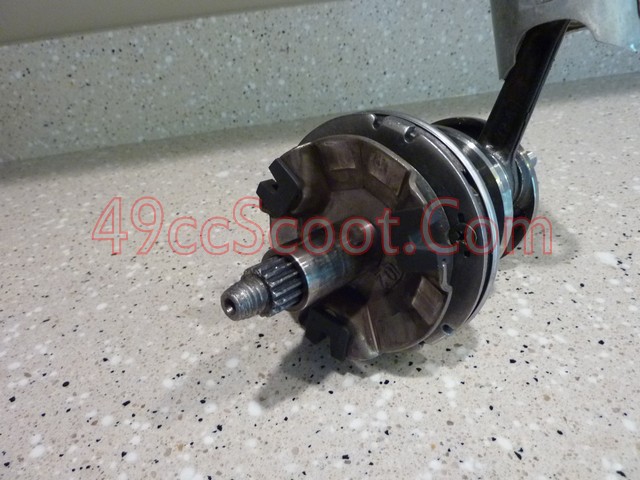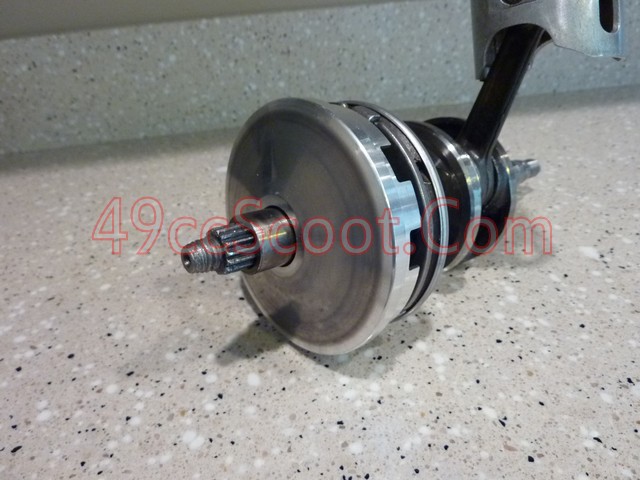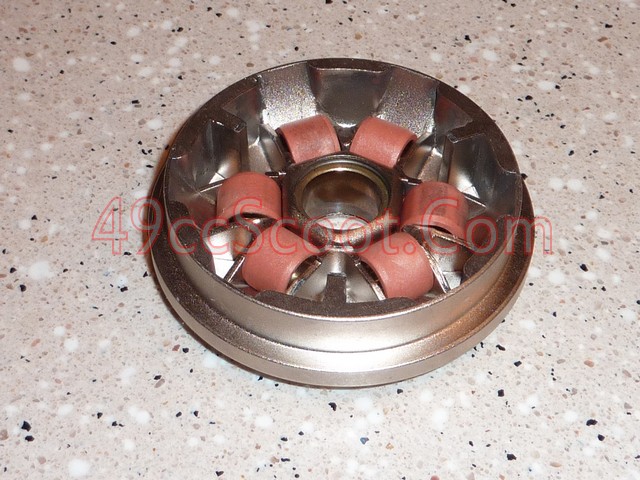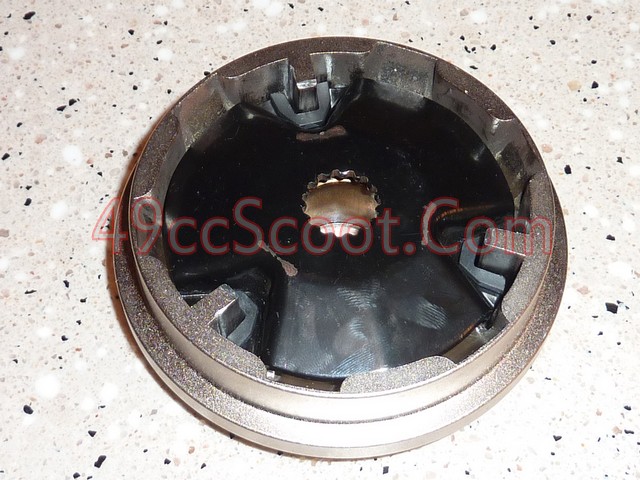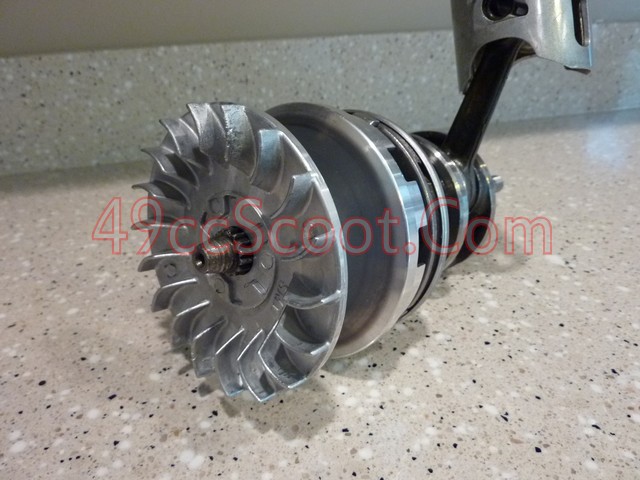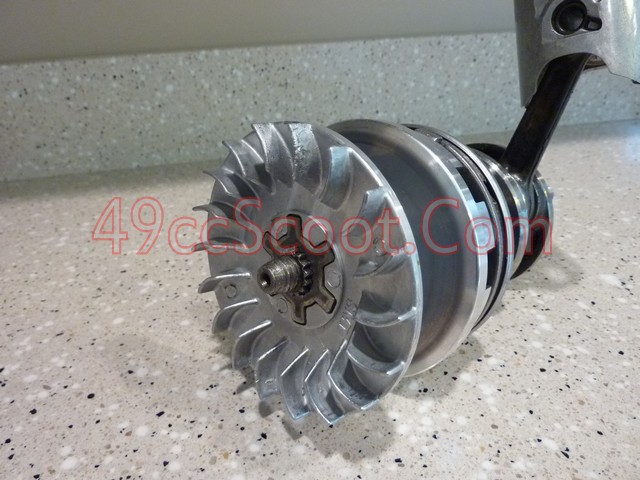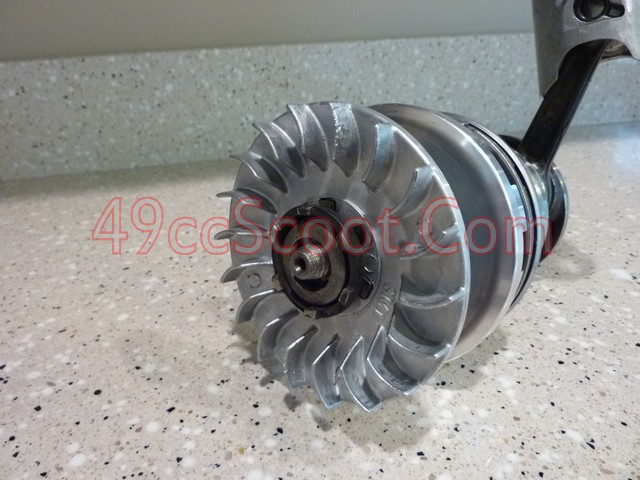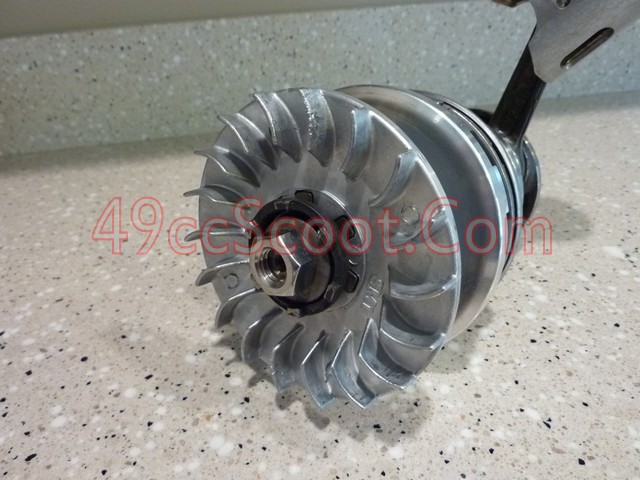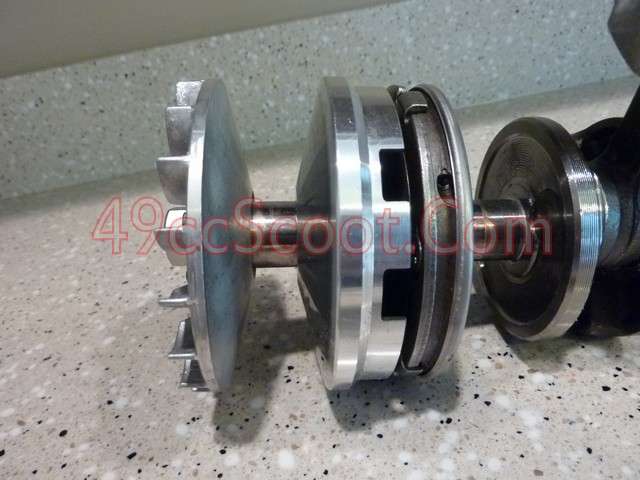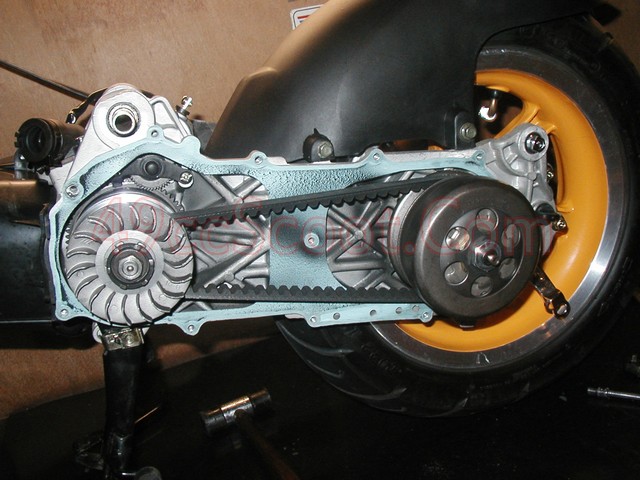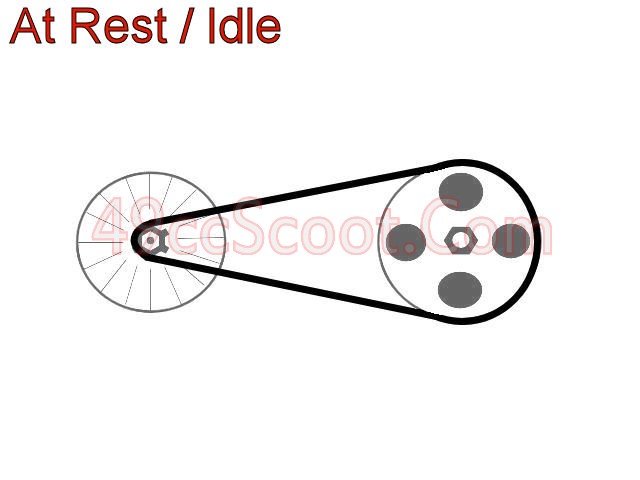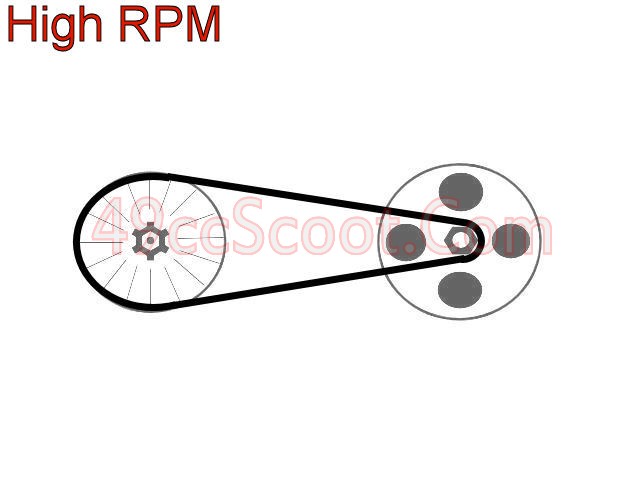Post by 90GTVert on Aug 31, 2010 20:23:42 GMT -5
I'm going to start out with the most basic variator setup info and parts identification. If you don't know what the parts are, it's going to be hard to understand how to set them up.
Shown here is a typical variator setup for a Yamaha Jog / Minarelli / 1E40QMB two-stroke engine. Other engine types may use slightly different configurations, but a lot of the info here can apply to other platforms.
From left to right (numbered to correspond with images below) : Variator Nut (#1), Washer (#2), Kick Starter Pawl (#3), Variator Woodruff Key (#4), Variator Fixed Plate (#5), Variator Moveable Face (#6), Variator Drive Boss (#7), Variator Ramp Plate And Guides (#8)
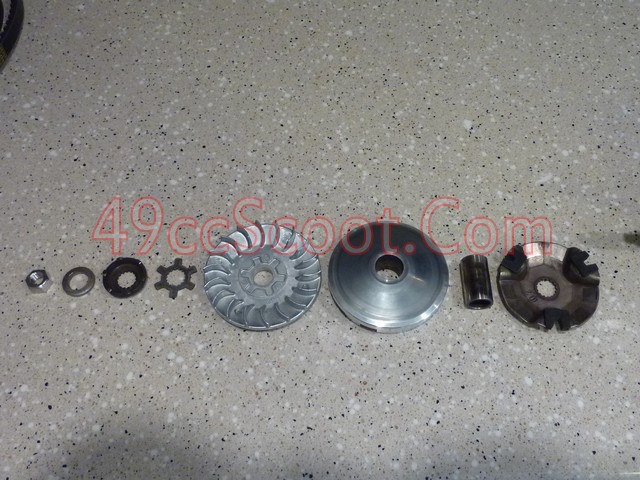
#1 : Variator Nut : This is generally a half nut (half the depth/threads of a standard nut). Shown here is a whole nut (all I had lying around without disassembling something). Simply holds the vairator components in place on the crankshaft.
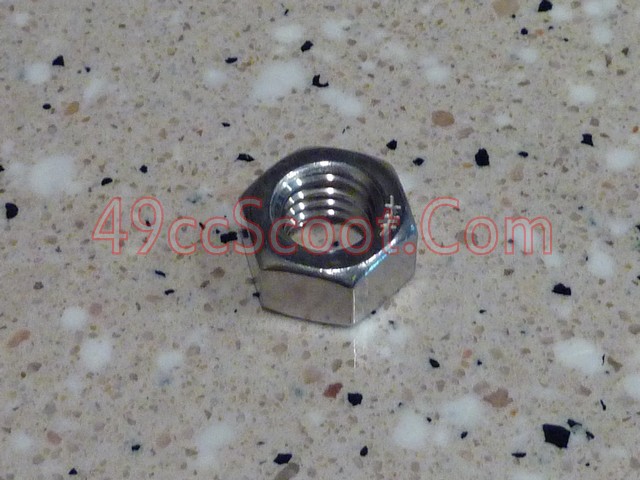
#2 : Washer : A washer that fits between the variator nut and the starter pawl.
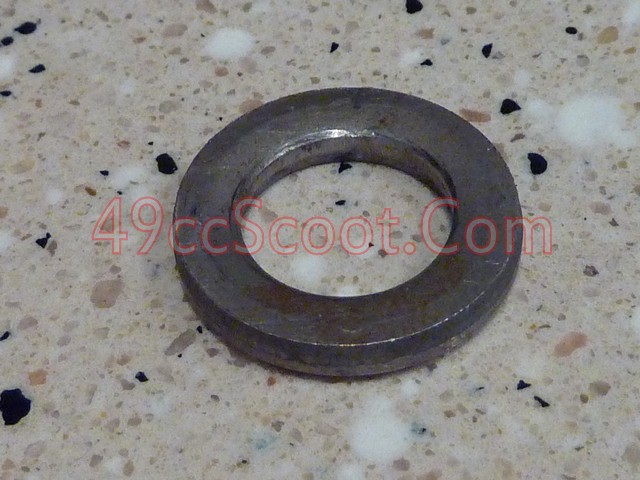
#3 : Kick Starter Pawl : This allows the kick starter to lock in place when the kick starter is used.
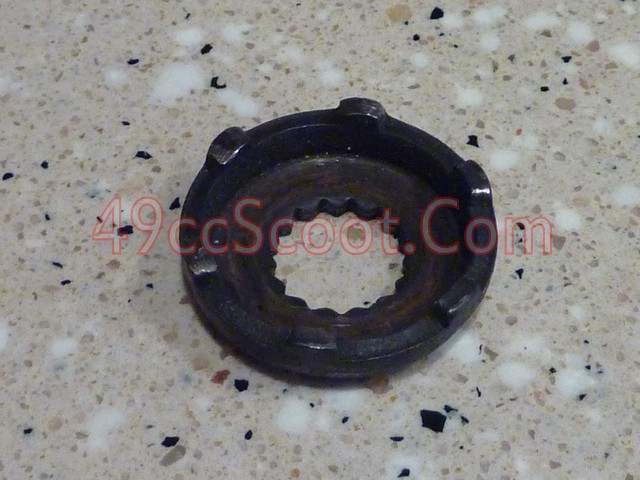
#4 : Variator Woodruff Key : Sometimes called a star washer. This specialty washer fits into a reciever groove in the variator fixed plate (#5) and onto the splines of the crankshaft to lock the fixed plate into position on the crankshaft.
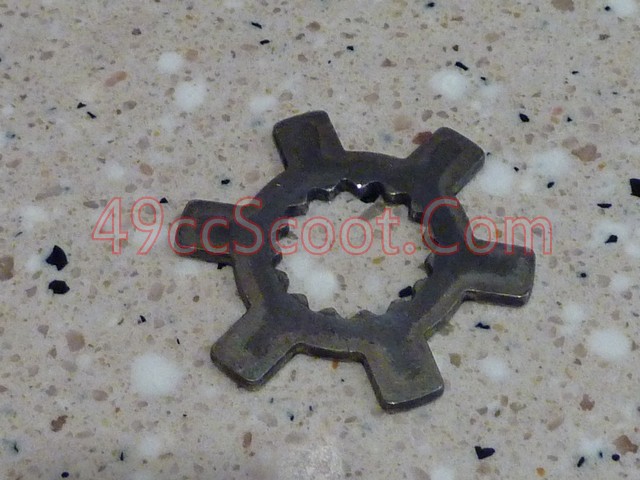
#5 : Variator Fixed Plate : Sometimes called the Variator Fan or Fixed Sheave. This is one of the two drive faces that the belt rides on inside of the variator. As it's name implies, it does not move... or rather it rotates fixed to the crankshaft, but it's position does not change otherwise. The blades on the outside of the plate aid air circulation inside the CVT.
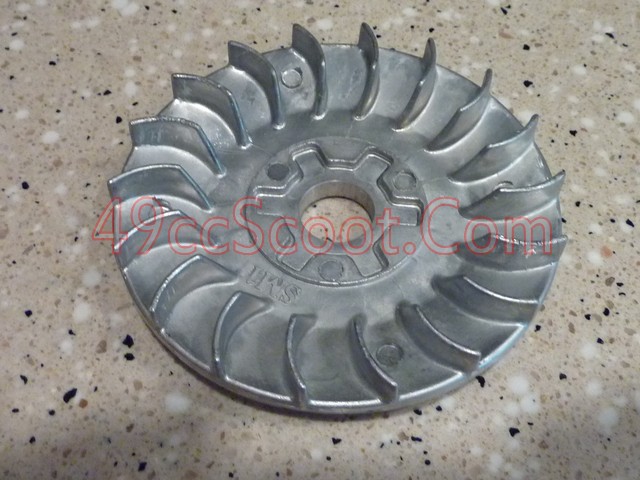
#6 : Variator Moveable Plate : Sometimes called the Moveable Sheave, or simply the Variator. This is where the action is. This is the other half of the faces that the drive belt rides on. This plate moves in and out, controlled by the forces of roller weights driven by centrifugal force, to make the belt ride higher or lower between both variator faces.
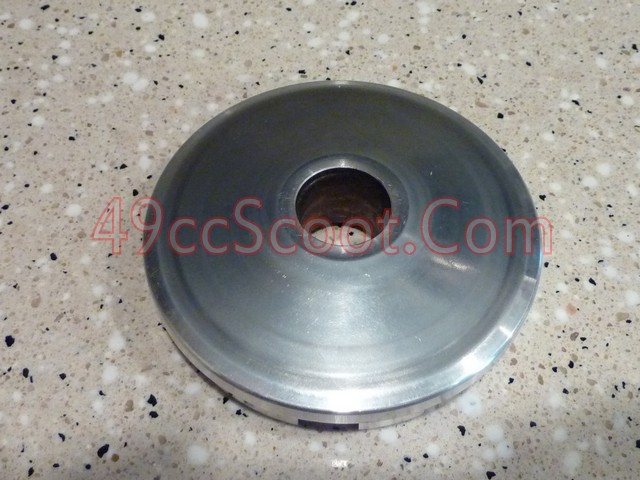
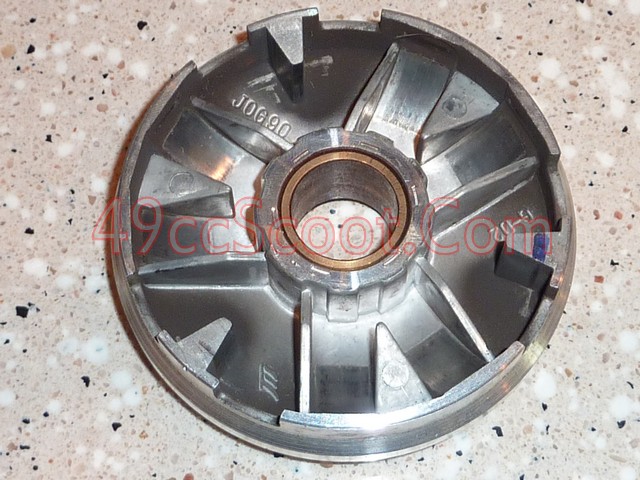
#7 : Variator Drive Boss : Sometimes called the Sleeve. This spaces the variator plates, or more accurately it separates the variator ramp plate and teh fixed plate. The moveable face rides on the drive boss.
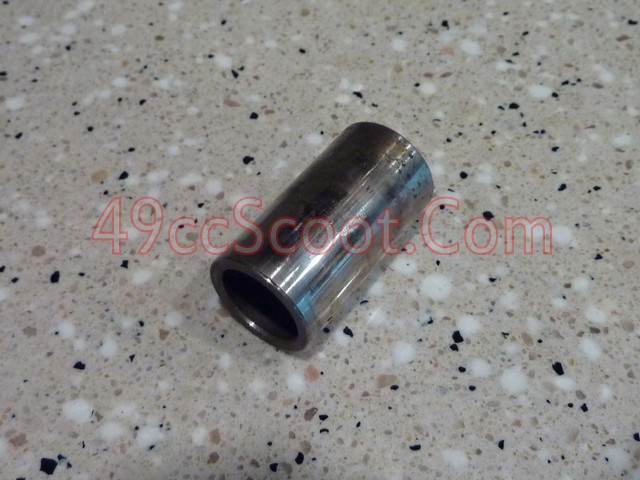
#8 : Variator Ramp Plate and Guides : The Guides (black plastic pieces) are sometimes called Slides or Bushings. The ramp plate rides on tracks in the variator and it positively located on the crankshaft's splines.
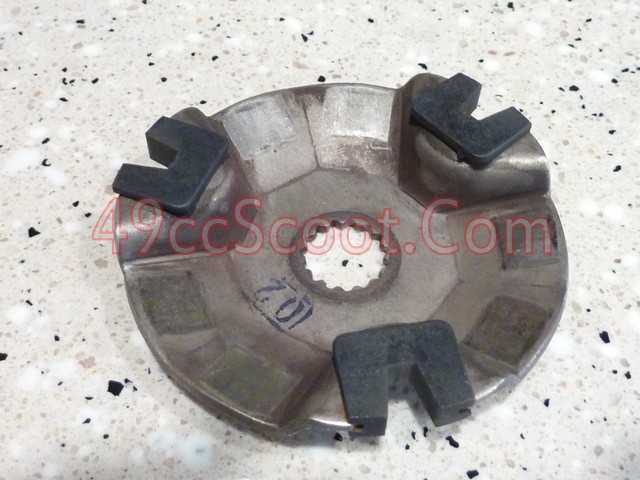
Roller Weights : Roller weights ride in tracks inside the moveable plate of the variator and help to open and close the front pulley.
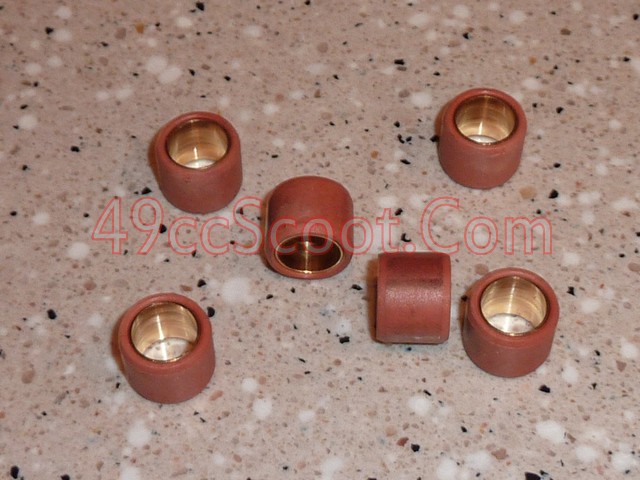
Shown here is a typical variator setup for a Yamaha Jog / Minarelli / 1E40QMB two-stroke engine. Other engine types may use slightly different configurations, but a lot of the info here can apply to other platforms.
From left to right (numbered to correspond with images below) : Variator Nut (#1), Washer (#2), Kick Starter Pawl (#3), Variator Woodruff Key (#4), Variator Fixed Plate (#5), Variator Moveable Face (#6), Variator Drive Boss (#7), Variator Ramp Plate And Guides (#8)

#1 : Variator Nut : This is generally a half nut (half the depth/threads of a standard nut). Shown here is a whole nut (all I had lying around without disassembling something). Simply holds the vairator components in place on the crankshaft.

#2 : Washer : A washer that fits between the variator nut and the starter pawl.

#3 : Kick Starter Pawl : This allows the kick starter to lock in place when the kick starter is used.

#4 : Variator Woodruff Key : Sometimes called a star washer. This specialty washer fits into a reciever groove in the variator fixed plate (#5) and onto the splines of the crankshaft to lock the fixed plate into position on the crankshaft.

#5 : Variator Fixed Plate : Sometimes called the Variator Fan or Fixed Sheave. This is one of the two drive faces that the belt rides on inside of the variator. As it's name implies, it does not move... or rather it rotates fixed to the crankshaft, but it's position does not change otherwise. The blades on the outside of the plate aid air circulation inside the CVT.

#6 : Variator Moveable Plate : Sometimes called the Moveable Sheave, or simply the Variator. This is where the action is. This is the other half of the faces that the drive belt rides on. This plate moves in and out, controlled by the forces of roller weights driven by centrifugal force, to make the belt ride higher or lower between both variator faces.


#7 : Variator Drive Boss : Sometimes called the Sleeve. This spaces the variator plates, or more accurately it separates the variator ramp plate and teh fixed plate. The moveable face rides on the drive boss.

#8 : Variator Ramp Plate and Guides : The Guides (black plastic pieces) are sometimes called Slides or Bushings. The ramp plate rides on tracks in the variator and it positively located on the crankshaft's splines.

Roller Weights : Roller weights ride in tracks inside the moveable plate of the variator and help to open and close the front pulley.



